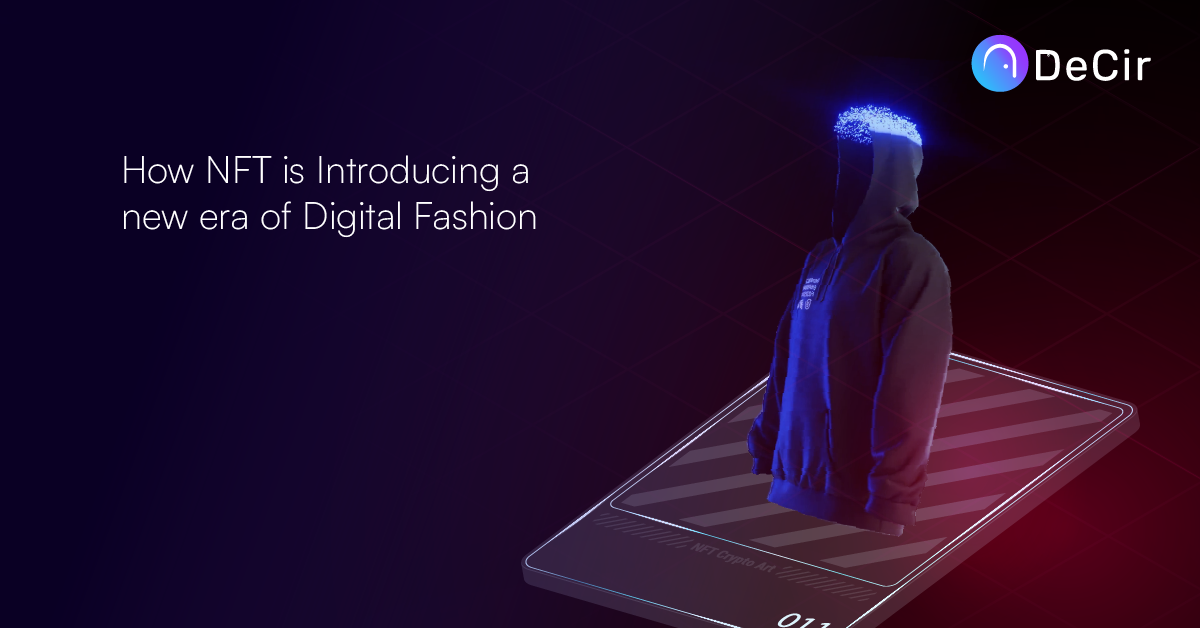3D fashion has been at the helm of global fashion over the past decade. During this period, digital fashion has allowed consumers to see the exact image of their outfits before they are ordered. It is also possible for consumers to try out their outfits and determine how befitting they would be upon purchase. Virtual fashion goes a step further. It introduces digital ownership of outfits and grants consumers the ability to wear these outfits in the virtual world like they would in real life.
TL;DR
- Fashion brands have largely benefitted from NFT digital fashion trends over the past year
- Blockchain gaming has played an important role in virtual fashion adoption
- The metaverse also provides an avenue for virtual fashion to thrive. This is made possible through virtual galleries and the ability to live and work in the virtual world.
A Goldmine for Fashion Brands
Digital fashion has been around for more than a decade. However, the ability to own virtual outfits and wear them like they are real clothes is only just gaining traction. This was brought to the limelight following the Dune Analytics brand NFT revenue statistics of 2022.
The statistics revealed that more than half of the top ten brands with the highest revenues from NFT sales are fashion brands. In total, fashion brands made around $260 million from NFT fashion with brands such as Nike, Gucci, D&G, and Adidas, taking the lead.
The revelation paints vivid imagery of how virtual fashion is fast emerging. It is an indication of how consumer taste is changing and how other factors are driving the demand for digital fashion outfits. Thus, the statistic is an indication of how the global fashion landscape could change over the next decade.
Also read: What are PFP NFTs used for?
The role of Blockchain Gaming
Gaming has led the emergence of digital fashion long before Web3. Games such as League of Legends, Dota-2, and Counter-Strike, have offered players the ability to buy skins and outfits for their characters for a long time. Virtual fashion now makes it possible for players to buy, sell, and claim ownership of these skins.
Today, there is a proliferation of blockchain games that now support skins and other forms of digital fashion. Blockchain enables players to collect virtual clothing in the form of NFTs. Essentially, NFT indicates ownership, thus, granting players the ability to easily exchange assets for money as they deem fit.
Interesting to read: Benefit of DeCir Royalty Splitter tool for your NFT Project
Virtual Fashion in the Metaverse
While NFT fashion in gaming can be considered to be niche in some quarters, metaverse fashion is a little different. Brands continue to accommodate metaverse fashion in their overall digital strategy and the result has been positive so far.
The metaverse allows fashion brands to create new products such as virtual clothing, sunglasses, and footwear. These outfits are expected to contribute to the growing trend of outfits that individuals require to function in the ever-growing virtual world.
In this light, Gucci has launched its virtual sneakers while Nike has launched Cryptokicks. In a similar vein, famous jewelry maker, Tiffany, has successfully worked with Cryptopunks to launch a limited-edition virtual jewelry collection. Popular sunglasses company, Rayban, has also made its foray into virtual fashion through the launch of its virtual eyewear.
The sudden surge in virtual fashion owes largely to the expectation surrounding the metaverse. The metaverse has been billed to be the next iteration of the internet. When fully developed, the metaverse will be the place where people work, play, socialize, consult, and carry out all forms of human interactions.
When this becomes possible, virtual fashion will be needed to showcase individual styles. While humans might never get to wear virtual clothing, their avatars can wear them to reflect an individual’s personality just as in the real world.
Conclusion
There is no denying that virtual fashion is still in its infancy. Nonetheless, it is a sector that is bound to grow in the near future. Adoption will ultimately increase as more people gain access to the metaverse. If people will live, work and play in the virtual world, then NFT fashion will create a form of identity to help people recreate their physical fashion taste in the virtual world.


